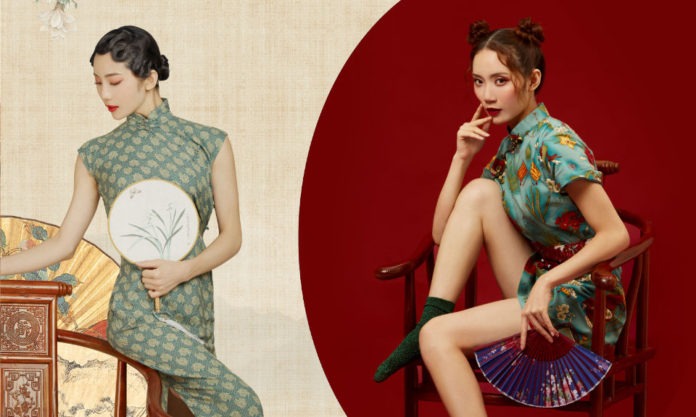A historical relic. A cultural theme park. Xi’an, the ancient capital…
Recently, I had the chance to visit the incredible, historical city of Xi’an and see its many wonders. Many of its most prized locations are all deeply rooted in the city’s history and are a wonder not only to many foreigners, but its own people as well.
On my 1st day there, right outside the entrance to the city wall, there was a group of women wearing the traditional Chinese dress, “Hanfu”. I was taken aback to see these flowing robed ladies wandering around amidst the iPhone-toting tourists in jeans and sweatpants.
Were they some mystical time travellers, visiting from the ancient past? They didn’t look the least bit surprised by the modern speed of life. As I studied them, I realised that just because I hadn’t ever seen or noticed at least, anyone wearing traditional Chinese clothing , for the whole day and not just for a picture, didn’t mean it was an anomaly.
The people around me hardly batted an eyelid. I put this strange sighting out of my mind. But then I noticed it again and again. Throughout the 3 days, I spotted so many groups of women wearing traditional Chinese clothing, whether at historical landmarks or just on a regular street, it got me thinking.
Haven’t you ever wondered how the clothing we now wear changed, evolved from what it once was centuries ago? Women’s fashion in particular, in China, how did it develop and is it de-evolving now? Will we all soon be donning flowing robes and liking it?
Qin and Han Dynasties (221 BCE – 220 CE)
The first emperor of Qin Dynasty, Qin Shihuang, started a clothing system where people’s ranks and social positions could be interpreted through the clothing they wore. This carried on into the Han dynasty in which the Hanfu began. Literally meaning, “Han clothing”, it goes by many other names, such as Hanzhuang and Huafu.
There were four main types of Hanfu clothing, the first being the “Mianfu Robe”. This was traditionally worn by the highest social class, the princes and nobles. Then came the “Shenyi Hanfu”, a one-piece dress that looked more like an overcoat. Its purpose was to cover the body while also being elegant. Then there was the “Runqun Hanfu”, the daily dress for most people, especially women, until the Qing Dynasty. Unlike the Shenyi Hanfu, this was a two-piece outfit that consisted of a short shirt (Ru) and a very long skirt (Qun). With this sounding something similar to that worn by my friends in Xi’an, I wondered why such an ancient style is reasserting itself so strongly at this point in history?
Back wandering through the historical wardrobe of ancient China, there came, lastly, the “Duanhe Hanfu”, which was also a two-piece dress, but instead of a skirt, it had a pair of trousers, making it ideal for work and labour. During the Qin dynasty, it generally meant the person was of the lowest social class, but later in the Han Dynasty it was worn by most people.
Tang Dynasty (618 -907)
During this time, fashion became a lot more open and the trends would often change because people were more accepting of them.
This is when flower/floral patterns and bright colours became popular with some of the restrictions of the previous times being lifted. Many women wore clothes that showed their arms and chests. During this time, they generally wore an updated version of the Ruqun, one in which they could choose to show their legs or arms and even use some translucent materials.
One of the few restrictions in the Tang dynasty was that golden yellow became a taboo; it was only for the emperor and the royal family.
Yuan Dynasty (1271 – 1368)
The Mongolians had taken control of China and with them, they brought… cotton! The revolutionary material immediately became very popular with the working class because it was cheap, warm and soft, which made it most practical. It was also a time in clothing where the styles and ideas of different ethnicities in China and Mongolia were combined to make the “Yiseyi” garments.
Qing Dynasty (1644 – 1911)
Near the beginning of the Qing Dynasty, the Hanfu was outlawed, under new rules set down by the Manchu, the semi-nomadic tribe that rose to power in Manchuria. They banned man buns and brought in other fashion laws. According to the website NewHanfu.com, “They shaved their hair and left it in a braid that hung behind their heads, wearing thin horseshoe sleeve clothing, tight socks, and deep boots”. The flowing cotton Runqun Hanfu was banished. There was a huge shift in clothing and hair styles for all people. After banning Han clothing, all Han people in China were to wear a Cheongsam, the long Manchu gown. However, this didn’t last for the entire Dynasty and eventually the restrictions were loosened. Nonetheless, people began to drift towards western fashions, especially after the turn of the 19th century, with foreign visitors of all varieties frequent in the Orient at that time.
Modern Day (1912-)
In the mid 20th century, as China became more open to the world, their clothing also began to become more and more western. Today, many Chinese women wear a more modern style of the Qipao for their wedding ceremony, but wear what we would consider to be “normal” clothing the rest of the time.
But these women in Xi’an were at ease in their Hanfu. What if the people hadn’t drifted towards western staples of fashion? Wouldn’t it be nice to feel the wind brush past a flowing Hanfu skirt and feel like that is normal?
As time moves on, it’s easier to evolve with it and forget how things used to be. But going back isn’t always a bad thing, sometimes it’s what we need to do to reconnect. So, while time is moving on, it seems that the Hanfu is coming back.









